Motorcycle Brake fluid: The Need-To-Knows
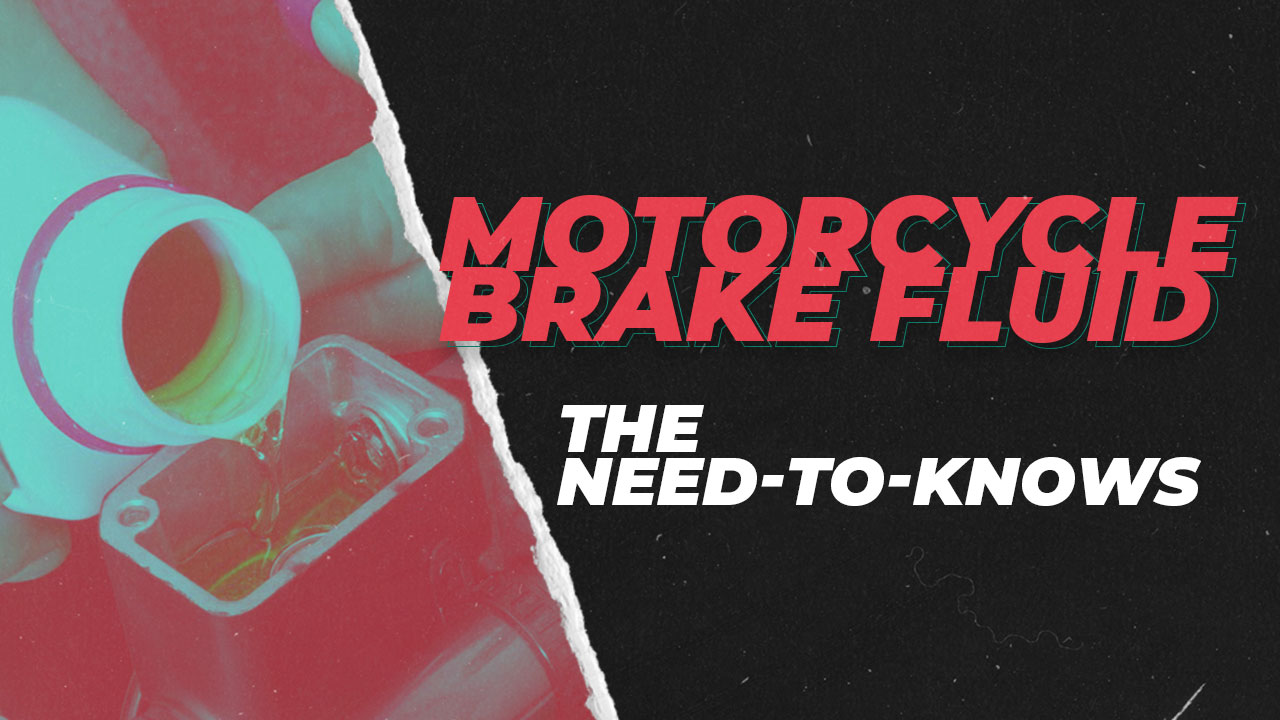
Motorcycle Brake fluid: The Need-To-Knows
Brake fluid is a type of hydraulic fluid that is used in hydraulic brake systems. It is the medium through which the force applied to the brake lever or pedal is transferred into pressure that the piston(s) in the caliper exert on the brake pads so they press against the brake discs. It works because fluids do not appreciably compress and so the transfer of pressure is almost totally efficient.
From a safety aspect, the brake fluid is the most important fluid in your motorcycle, and yet too often it is ignored or forgotten. The most important thing to realise is that, except for one seldom used type, it goes off, and with it your brakes go off. Therefore it must not be ignored and must be included as a regular item in the maintenance schedule of every motorcycle with hydraulic brakes.
Brake fluid types
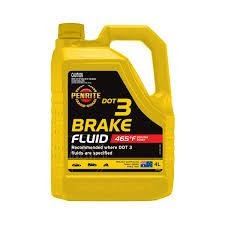
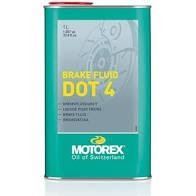
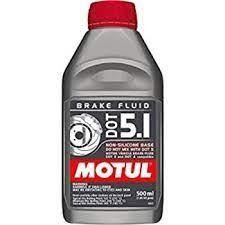

There are basically two different types of brake fluid, those that are glycol ether-based and those that are silicone-based. The glycol ether fluids are categorised as DOT 3, DOT 4, and DOT 5.1. The silicone fluid is DOT 5. DOT (which stands for the Department of Transportation in the US), has become the defining manufacturing standard, but fluids are also rated by the SAE (Society of Automotive Engineers) and the ISO (International Organisation for Standardization). The standards do not dictate what the composition of the fluid must be, but only the performance levels, particularly the dry and wet boiling points, that the fluids must attain, as shown in the table below. To distinguish between them glycol ether fluids must either be colourless or light amber coloured, and silicone fluids must be coloured purple.
|
Dry Boiling Point* |
Wet Boiling Point* |
Composition |
|
|
DOT 3 |
205°C/401°F |
140°C/284°F |
Glycol Ether |
|
DOT 4 |
230°C/446°F |
155°C/311°F |
Glycol Ether/Borate Ester |
|
DOT 5 |
260°C/500°F |
180°C/356°F |
Silicone |
|
DOT 5.1 |
260°C/500°F |
180°C/356°F |
Glycol Ether/Borate Ester |
*The dry boiling point is determined using fresh fluid from a new sealed container, i.e. before its hygroscopicity has allowed it to absorb any moisture. The wet boiling point is determined using fluid that has been contaminated with 3.7% water and so is always lower. Note that the boiling points given are a minimum required standard in manufacture for classification purposes, and good quality fluids, especially racing fluids, will have higher boiling points than those given above. The actual boiling points of different fluids may be given on the product label, but if not will probably be available from the manufacturer.
Brake fluid characteristics
Glycol ether (DOT 3, 4, and 5.1) brake fluids are hygroscopic, which means they absorb moisture from the atmosphere under normal humidity levels. Any moisture in the fluid lowers the boiling point, which can cause problems with hard and continuous braking, and despite the addition of borate esters in DOT 4 and DOT 5.1 fluids that both raise the boiling point and act as corrosion inhibitors, any moisture can eventually cause internal corrosion in the master cylinder, the caliper(s) and the banjo fittings on the brake hoses if the fluid is not changed soon enough. Because they are hygroscopic glycol ether fluids must be changed regularly, preferably every two years, to avoid a reduction in their performance. Silicone (DOT 5) brake fluids are not hygroscopic and can maintain an acceptable boiling point over the fluid's service life, but they are more compressible than glycol ether fluids and this makes them unsuitable for most normal applications.
DOT 3, DOT 4, DOT 5, and DOT 5.1 – what is the difference?
DOT 3: A glycol ether-based fluid. The most basic fluid currently in production, with the lowest performance characteristics, has been superseded in common use by DOT 4. It is suitable for most regular bikes used in normal circumstances, but not for high-performance or racing bikes because of its lower boiling points.
DOT 4: A glycol ether-based fluid. Now the most used brake fluid has taken over from DOT 3. It is very similar to DOT 3 but contains borate esters that give it higher dry and wet boiling points and deal with the corrosive effect of any moisture that gets absorbed in the fluid. However, once the fluid does start to absorb moisture its boiling points will lessen more quickly than DOT 3 fluids.
DOT 5: A silicone-based fluid. It has higher dry and wet boiling points than DOT 3 and 4 and has a more stable viscosity over a wider temperature range. Unlike glycol ether-based fluids it does not harm paintwork. However it is more compressible and so is unsuitable for most modern automotive applications, though is used in some military applications due to its longevity, ability to withstand extreme conditions and lack of corrosive effect. Harley Davidson used DOT 5 in their brake systems between 1976 and 2005 but thereafter switched to DOT 4.
DOT 5.1: A glycol ether-based fluid containing borate ester corrosion inhibitors. It has a lower viscosity than DOT 4 and has the same wet and dry boiling points as DOT 5. The lack of acceptance of silicone-based fluids led to the development of 5.1, but while it is used for high performance and heavy-duty applications because of its higher boiling points it is more expensive and is still not as widely used as DOT 4.
Compatibility – can you mix different brake fluids?
The short and simple answer is NO. Use only what is recommended for your motorcycle and stick to it. Follow the manufacturer’s guidance on how often it should be changed.
Having said that, technically the glycol ether DOT 3, DOT 4 and DOT 5.1 brake fluids are compatible with each other from a chemistry point of view, but there are still reasons why you should not mix them, and mainly this comes down to the fact that brake systems are designed to suit the application of the vehicle they are being fitted to, and the appropriate fluid is then matched to suit that system.
The one aspect of fluid compatibility that cannot be argued with is that you MUST NOT mix DOT 5 with any other type of brake fluid. Whoever it was that named incompatible fluids so similarly has created a lot of confusion and some serious consequences.
What brake fluid should I use?
The golden rule is to only use the type of brake fluid that the manufacturer of your motorbike specifies, and it is important that you do not mix the different types, especially you must never mix DOT 5 with any of the others. If you are not sure what type of fluid is in your system, find out from a dealer what should be used, then completely empty the system and refill it using a new fluid of the correct type from a sealed container.
Brake fluid in use
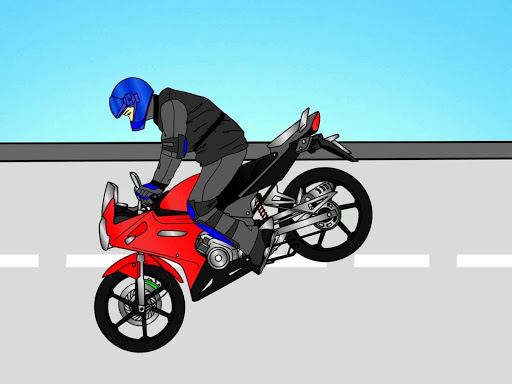
As previously mentioned, glycol ether-based brake fluids are hygroscopic and so absorb moisture, which will affect its performance, and so the fluid must be changed every two years or as specified in the bike’s maintenance schedule. It is essential that whenever you change the brake fluid or top the fluid level in the reservoir up that you only use new fluid from a sealed container. Do not be tempted to use the fluid that you have had on a shelf for an unknown length of time. Brake fluid comes in small containers and is not expensive.

Check the fluid level in each reservoir frequently, even when the bike is new and the mileage is low – refer to your handbook or manual for details on how to do this. The fluid level will drop as the brake pads wear because fluid is displaced from the reservoir into the system as the pistons extend to compensate for the pads becoming thinner. . The brake system is designed so that if the fluid is at its UPPER/MAX level mark when new pads are fitted, the fluid will be at its LOWER/MIN level mark when the pads are worn to their limit. When you fit new pads the pistons must be pushed back into the caliper to accommodate the extra thickness of the new pads and when you do this fluid is displaced from the system back into the reservoir. So in theory you should never have to top the reservoirs up. However, throughout the life of a motorcycle, it is unlikely this consistency will be maintained, especially if fluid changes or bleeding requirements do not coincide with pad replacement.
If the fluid level drops quickly and you have to top it up often then you must have a leak somewhere, either from a hose, a hose joint, or banjo union, or from the seals in the master cylinder or caliper. Any leak will leave some evidence, and the performance of the brakes will be reduced. The source of any leak must be found and fixed immediately because of the obvious implications for safety.
WARNING!
DOT 3, DOT 4 and DOT 5.1 brake fluid can harm some plastics and will eat through paint, so be sure to cover all surrounding surfaces with plenty of rags when opening fluid reservoirs, disconnecting brake hoses, and pouring brake fluid!
